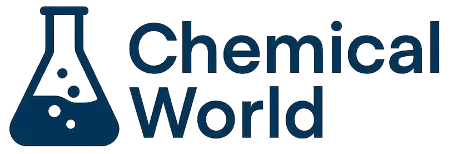Your cart is currently empty!
Technological Innovation in Analytical Testing: How Labs Keep Up with New Research Chemicals
As research chemicals evolve at unprecedented speed, analytical laboratories around the world must continually update their tools and techniques to keep pace. Synthetic cannabinoids such as 5F-ADB, 5F-MDMB, and CL-ADBA, alongside stimulants like A-PVP and cathinones including 3-MMC, present constant challenges to forensic and toxicology labs. Their structures shift rapidly, new analogues appear without warning, and many metabolites are unknown until cases of intoxication emerge. Technological innovation has therefore become a critical component of public health, law enforcement, and regulatory oversight.
The foundation of modern research chemical detection lies in advanced chromatographic methods. Gas chromatography–mass spectrometry (GC-MS) remains a workhorse technique, capable of identifying many cannabinoids and stimulants based on characteristic fragmentation patterns. However, as structural diversity increases, laboratories increasingly rely on liquid chromatography–tandem mass spectrometry (LC-MS/MS). This method provides greater sensitivity and can detect compounds that degrade under GC conditions. It is particularly effective for analysing metabolites of cannabinoids such as 5F-ADB, where hydrolysis and defluorination produce fragments invisible to basic screening tools.
High-resolution mass spectrometry (HRMS) has also revolutionised the field. Instruments such as Orbitrap and time-of-flight (TOF) mass spectrometers allow labs to detect previously unknown compounds by comparing accurate mass signatures with predictive models. When a new analogue like CL-ADBA appears, HRMS can identify its exact molecular composition even without reference standards. This capability dramatically shortens the time between initial detection and public health warnings, preventing widespread harm.
Another major technological advancement is the use of spectral libraries powered by machine learning. These libraries grow continuously as labs submit data on new compounds, including synthetic cannabinoids, cathinones, and stimulants. Machine learning models analyse fragmentation behaviour and create predictive spectra for analogues that have not yet been synthesised. This enables early detection of theoretical research chemicals before they appear on the market—an invaluable advantage for enforcement agencies attempting to stay ahead of underground chemists.
Infrared spectroscopy (IR) and nuclear magnetic resonance (NMR) remain essential tools for structural confirmation. While mass spectrometry provides strong clues about molecular composition, NMR allows chemists to confirm ring substitutions, linker structure, and stereochemical arrangements. This is especially important for complex molecules like next-generation cannabinoids or substituted cathinones, where small structural differences can dramatically alter pharmacology. These methods ensure accuracy in legal classification and toxicological research.
Automation has also entered the field. Many laboratories now use robotic sample preparation, AI-assisted data interpretation, and software that automatically flags unusual spectral patterns. These systems significantly accelerate the identification process and reduce human error—critical advantages when dealing with substances as potent as 5F-ADB or as unpredictable as A-PVP. Automated workflows also help labs manage increasing sample volume as research chemicals continue to circulate globally.
Finally, international cooperation enhances laboratory effectiveness. Networks such as the EMCDDA’s Early Warning System and the UNODC’s global toxicology programs allow labs to share analytical data on new compounds within days. When a novel cannabinoid or cathinone is identified in one country, others can immediately update their detection protocols. This rapid exchange of information is essential for responding quickly to dangerous new substances.
In summary, technological innovation is the backbone of modern research chemical detection. Through advanced chromatography, high-resolution mass spectrometry, predictive spectral modelling, automation, and global collaboration, laboratories can rapidly identify emerging substances and protect public health. As research chemicals become increasingly sophisticated, continued investment in analytical technology will be crucial for staying ahead of new synthetic cannabinoids, cathinones, and designer stimulants.
